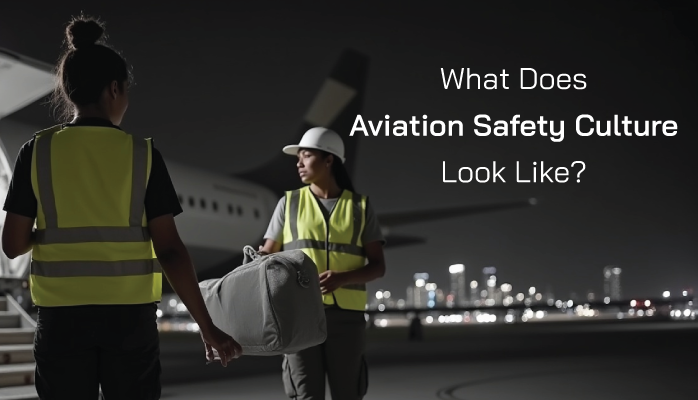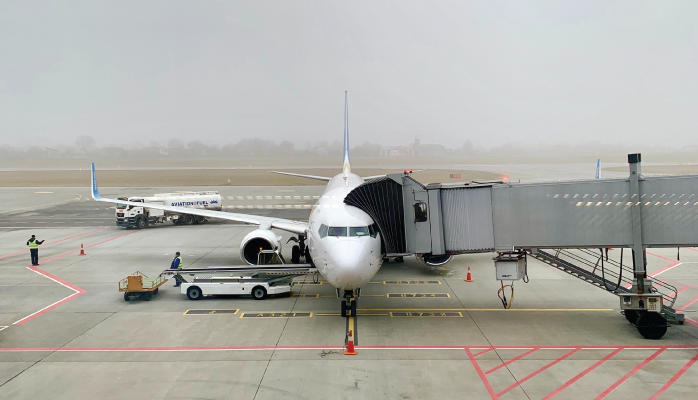What Does Safety Culture Look Like?

A robust safety culture is the foundation of an effective aviation Safety Management System (SMS), driving compliance with FAA Part 5 and ICAO Annex 19 while reducing risks. For airlines, airports, MROs, and flight schools, understanding what aviation safety culture looks like—and how to build it—is key to achieving safety excellence and regulatory success.
Defining Aviation Safety Culture
Aviation safety culture is the shared commitment to safety across an organization, reflected in attitudes, behaviors, and practices that prioritize risk management and accountability. It’s a mindset where every employee, from pilots to ground crew, actively contributes to a safer environment, beyond just following procedures.
- Proactive Engagement: Staff report hazards before issues escalate.
- Shared Responsibility: Clear roles ensure everyone owns safety.
- Continuous Improvement: Lessons learned prevent recurrence, as explored in our safety culture guide.
Core Components of Aviation Safety Culture
A strong safety culture is evident in daily operations, shaping how organizations manage risks and meet regulations. Here are its essential elements:
1. Leadership Commitment
Leaders set the tone by prioritizing safety over efficiency, formalizing this in policies and actions.
- A signed safety policy aligns with SMS principles.
- Executives engage in safety audits and briefings.
- Resources support tools like SMS Pro for compliance.
2. Non-Punitive Reporting
A blame-free environment encourages hazard reporting, providing data for risk identification.
- Anonymous reporting options increase participation.
- Feedback shows how reports drive improvements.
- Read more in our hazard reporting guide.
3. Accountability and Excellence
Safety culture demands high standards, ensuring no detail is overlooked, from maintenance to flight operations.
- Checklists ensure consistency.
- Training reinforces precision.
- SMS Pro’s auditing tools maintain accountability.
4. Transparent Communication
Open communication builds trust and keeps safety first.
- Safety briefings share updates.
- Dashboards provide real-time data.
- SMS Pro’s monitoring supports transparency.
5. Continuous Learning
Incidents and near-misses are opportunities to improve.
- Root cause analysis uncovers issues.
- Training programs address gaps.
- Our ICAO risk assessment guide offers insights.
The Importance of Safety Culture
Safety culture impacts compliance, safety performance, and efficiency.
- Risk Reduction: Proactive reporting prevents incidents, as noted in our ICAO monitoring guide.
- Compliance: Meets FAA, ICAO, and EASA standards.
- Trust: Boosts employee confidence.
- Savings: Avoids costly incidents and fines.
Without culture, even advanced SMS tools like SMS Pro are less effective.
Building a Proactive Safety Culture

Cultivating a safety culture requires strategic steps:
1. Gain Leadership Support
Leaders must visibly prioritize safety.
- Sign a safety policy annually.
- Invest in risk management tools.
- Join safety meetings.
2. Promote Non-Punitive Reporting
Remove fear to boost reporting.
- Use SMS Pro’s anonymous reporting.
- Show how reports improve safety.
- Train on reporting processes.
3. Deliver Targeted Training
Equip staff with safety skills.
- Offer role-specific training via SMS Pro.
- Use scenarios for engagement.
- Refresh annually, per our training library guide.
4. Enhance Communication
Create open safety channels.
- Share updates via newsletters.
- Hold regular briefings.
- Use SMS Pro for dashboards.
5. Reward Contributions
Recognize safety efforts.
- Award proactive reporting.
- Highlight contributions publicly.
- Track with SMS Pro’s analytics.
Case Study: Safety Culture Success
A regional airline struggled with low reporting due to a blame culture. After adopting SMS Pro’s anonymous reporting and leadership training, reports rose 70%, incidents fell 25%, and an FAA audit yielded zero findings, proving the value of a strong safety culture.
“SMS Pro transformed our safety culture,” said the airline’s safety director.
Overcoming Challenges
Building safety culture faces hurdles:
- Resistance: Staff may oppose new processes.
- Distrust: Fear of punishment limits reporting.
- Resources: Budgets may constrain tools.
Address these with SMS Pro’s intuitive features and leadership focus.
Measuring Safety Culture
Track these metrics:
- Reporting Rates: Higher reports show trust.
- Incidents: Fewer incidents indicate success.
- Feedback: Surveys reveal perceptions.
- Audits: Zero findings confirm compliance.
Use SMS Pro’s monitoring tools to assess progress.
Conclusion
Aviation safety culture—built on leadership, reporting, accountability, communication, and learning—is vital for SMS success. Start building yours with SMS Pro to achieve compliance and safety excellence. Request a demo today.
Last updated October 2025.





